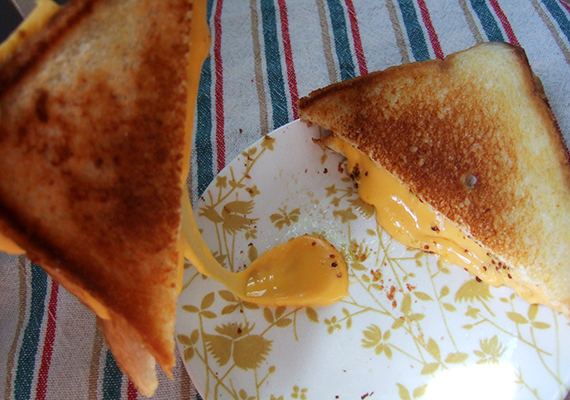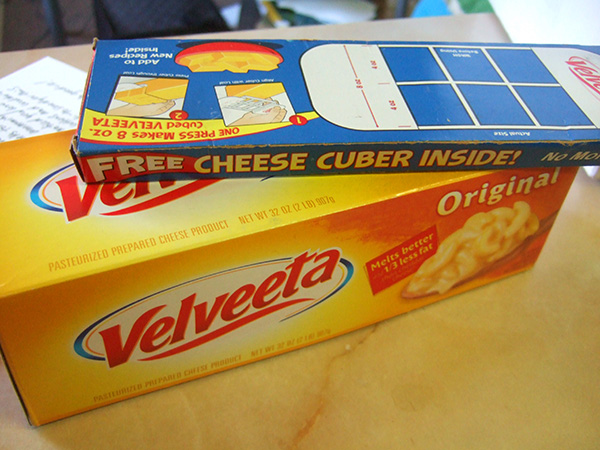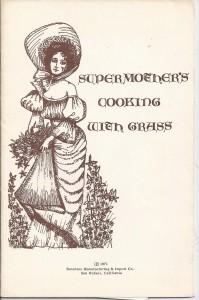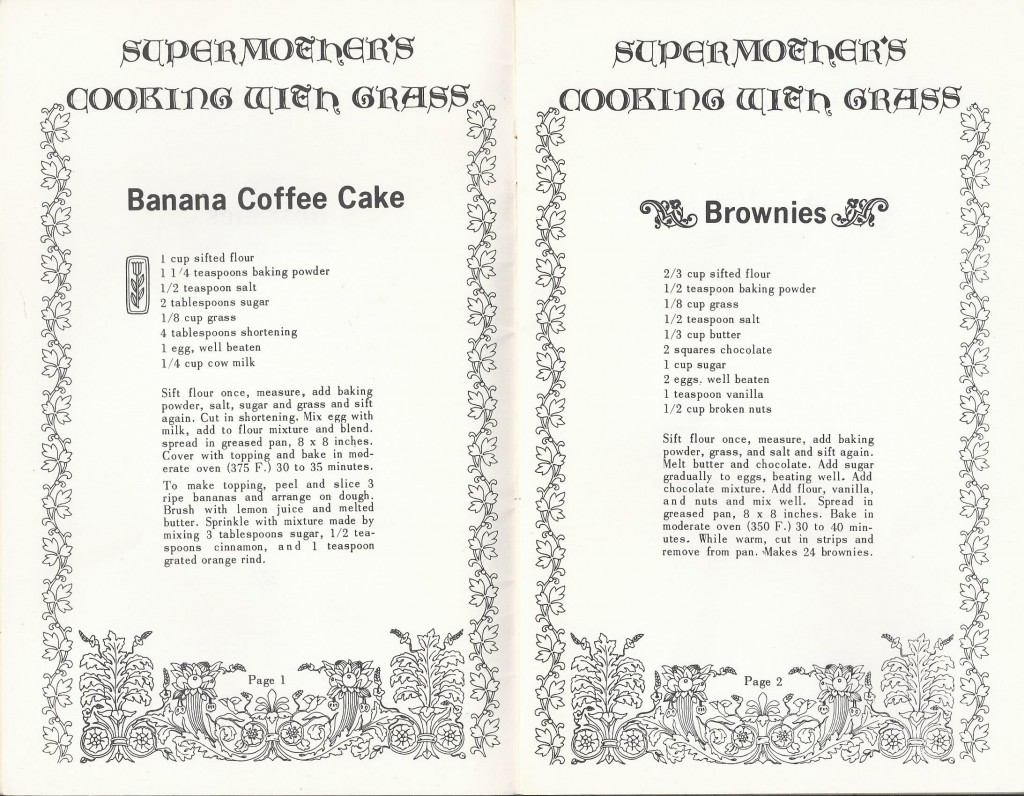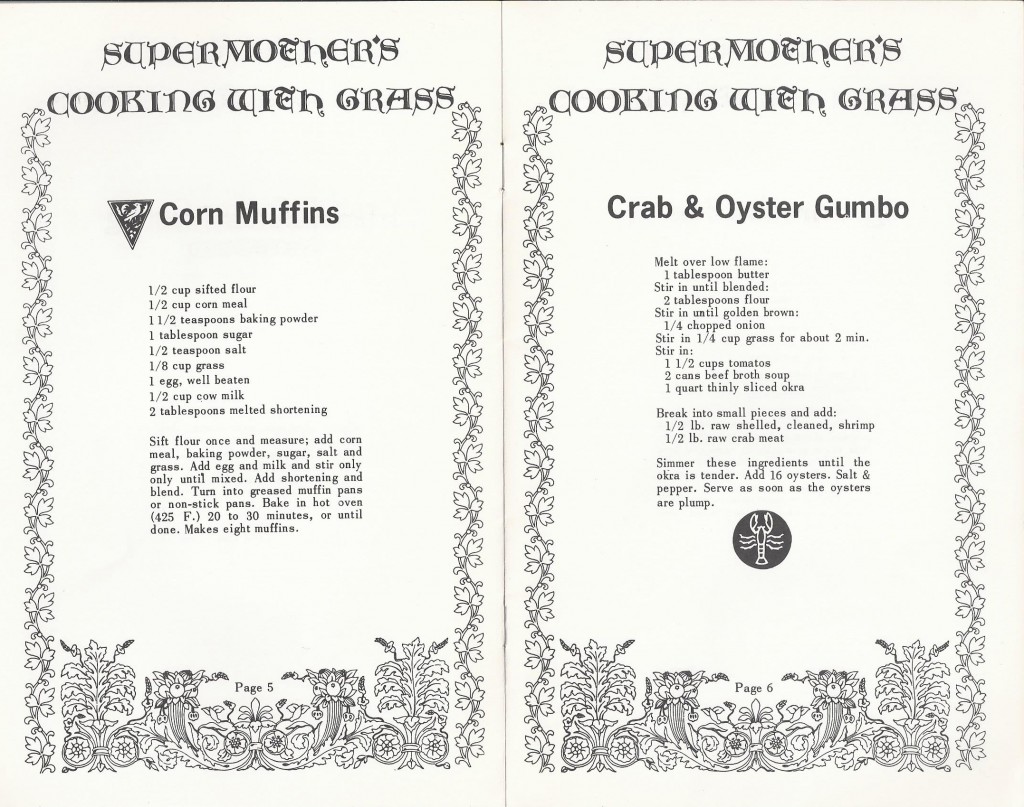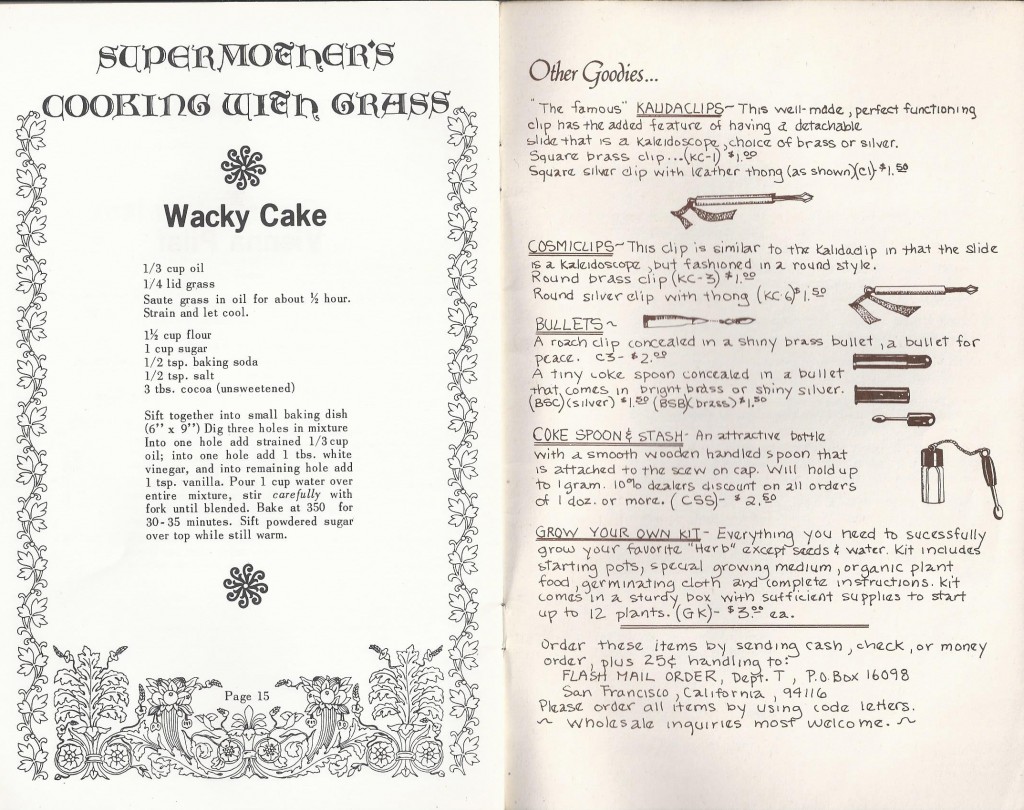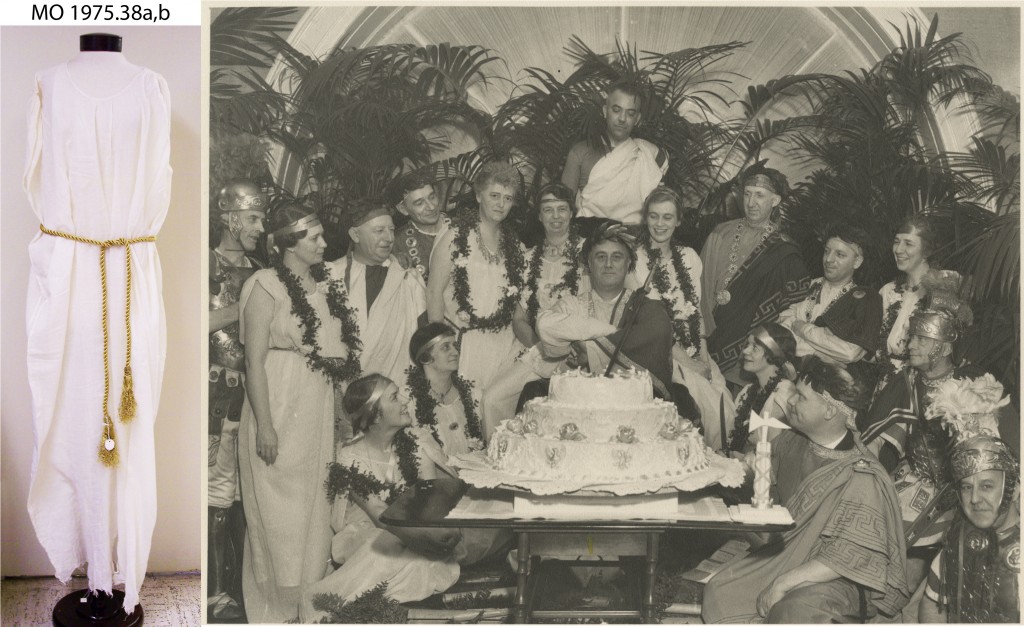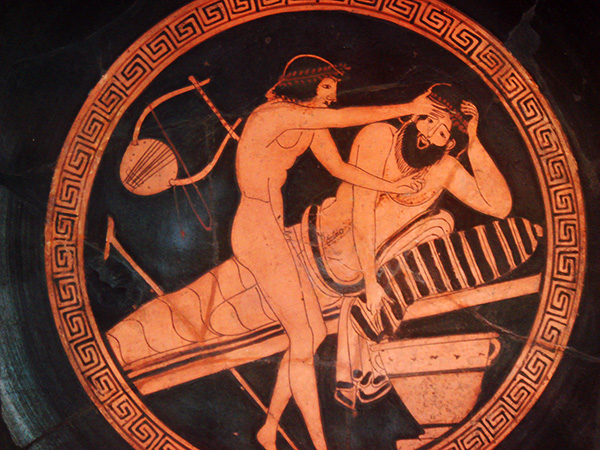The Ancient Greeks loved to drink.  They called wine “The mirror of the mind” and believed the way you behaved when you drank was revealing of your innermost nature.  As a result, the Ancient Greeks invented a celebration of wine: a male drinking party called a Symposium.
I first read about Syposia in Tom Standage’s book A History of the World in 6 Glasses ; classically, the event was written about by Plato. Â In Standage’s chapter on wine, he describes the symposium: an evening of food and wine that included games, philosophical debate, and tended to end in a riot or an orgy. Â Sounds like a party worthy of reenactment.
; classically, the event was written about by Plato. Â In Standage’s chapter on wine, he describes the symposium: an evening of food and wine that included games, philosophical debate, and tended to end in a riot or an orgy. Â Sounds like a party worthy of reenactment.
The Invitation
An ideal symposium was thought to have between 12-24 drinkers; 16 being ideal.  Originally all the drinkers would be men, with women only present as entertainers:  musicians, dancers, and high-end prostitutes.  Since sticking to this rule would exclude my own presence, I decided to open up the party to men and women alike.  The Facebook invitation went out with great fanfare.
You know I love a good theme party. So Brian and I are hosting a Symposium: An Ancient Greek Drinking party! The evening will include:- drinking wine (everyone please bring a bottle, red or white)
– ancient Greek snacks
– a “symposiarch”, chosen at random, who is responsible for deciding how drunk the party will get.
– games!
– “entertainments”
– serious discussion of philosophy or not.That’s all I got. Just come over, drink, and indulge my nerdiness |
The Food
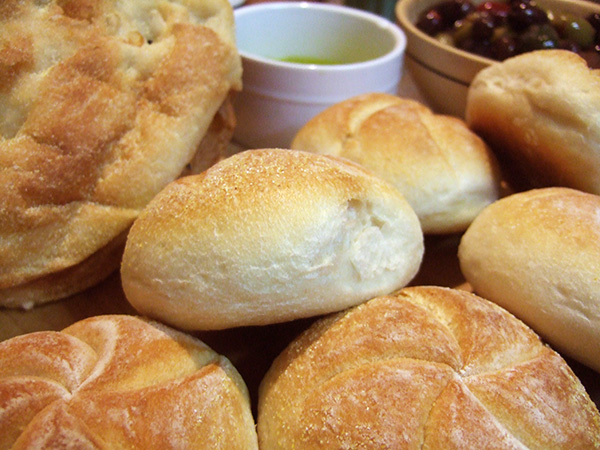 Two types of bread were served: flatbread for scooping up food and small, yeasty rolls. There was also olive oil for dipping and olives for snacking.
Two types of bread were served: flatbread for scooping up food and small, yeasty rolls. There was also olive oil for dipping and olives for snacking.
We known a lot more about Ancient Roman cooking than we do about the Ancient Greeks.  Much of what we do know comes from Archestratus’ The Life of Luxury, a poem written sometime in the mid-4th century BC.  In essence, it’s a guide book on where to find, and prepare, the best food in Greece.  You can read it here, and read a great article about it here.
The symposium was preceded by a meal, full of foods that laid down a good base for a night of drinking.  From various sources, I assembled this menu:
First Course: Fish and Lentils – The Ancient Greeks ate very little meat; their diet was based largely on fish, legumes and grains  Lentils were a staple of everyone’s diet–I slow-cooked mine with salt, vinegar and coriander.  For the fish, I prepared salmon–not a fish that I know would have been available to the Greeks, but my friends in Alaska had sent me a package of beautiful, fresh caught, wild salmon fillets.  So I had good fish, so I was gonna cook it.  I prepared it the way Archestratus suggests, with a little olive oil and a dusting of salt and cumin.  I broiled it for a few minutes and it came out flaky, flavorful, and perfect.  The cumin matched the fish wonderfully.  It was the best fish I’ve ever cooked.
Each course was served with bread: the Ancient Greeks ate primarily two types, a soft and fluffy roll and flatbread for scooping up food.  They did not use silverware–only bread and their hands. I also set olives on the table, for snacking.
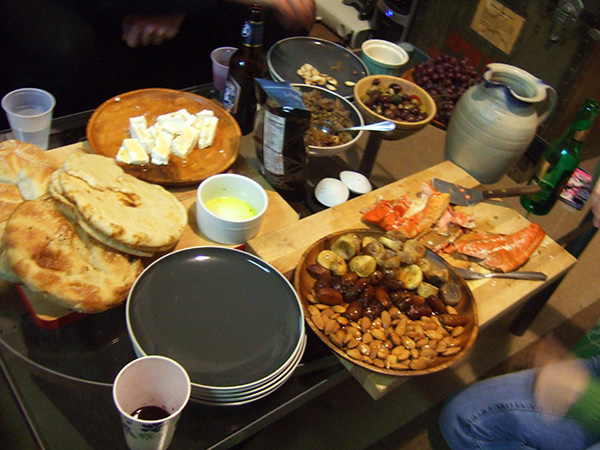 Later in the evening, I lost my ability to take decent photos. I should delegate.  But you get the idea. Clockwise from top: pistachios, a bowl of lentils, olives, grapes, a pitcher of water (the traditional accompaniment to dinner), broiled salmon with cumin, figs, dates, almonds drizzled with honey, bread, feta drizzled with honey.
Later in the evening, I lost my ability to take decent photos. I should delegate.  But you get the idea. Clockwise from top: pistachios, a bowl of lentils, olives, grapes, a pitcher of water (the traditional accompaniment to dinner), broiled salmon with cumin, figs, dates, almonds drizzled with honey, bread, feta drizzled with honey.
Second Course: Cheese, Fruits, and Nuts – I served feta, the most commonly available Greek cheese in the States, and very similar to the sheeps’ milk cheese the Ancient Greeks would have consumed. Almonds, pistachios and grapes were grown in Ancient Greece, and dried dates and figs were imported from the Middle East.  The entire platter was drizzled with Greek honey.
 Olive oil cake with grapes baked into the top.
Olive oil cake with grapes baked into the top.
Third Course: Olive Oil Cake – Although the Ancient Greeks did not cultivate sugar, they were fond of sweets, and made many types of honey cakes. Â Although I found many mentions of cakes made of barley or wheat ending a meal, I could not find any historic recipes. Â So I used this modern recipe, and used only ingredients the Greeks would have had available to them: wheat, yogurt, olive oil, and honey.
The Drinking
 The Symposiarch.
The Symposiarch.
In a traditional symposium, the guests don’t start drinking until after the meal.  But as people started to trickle in, I realized there was no way to convince anyone to stick to that rule.  Additionally, the Greeks always drank their wine mixed with water–they saw drinking it straight as both barbaric, and only fit for the gods.  Only Dionysus, god of wine, was strong enough to drink wine unmixed.  Mere mortal man could go mad.
Wine and water would be mixed at varying proportions in a special bowl called a krater.  When one krater of wine was finished, it was the Symposiarch who decided when another would be mixed.  The Symposiarch was the leader of the party–elected either by votes or by chance–who decided the topics that should be debated as well as the level of drunkenness the party would attain.  The ideal was to keep people tipsy and loose lipped without having the party descend into drunken chaos. One symposiarch said that three kraters of wine was just enough–and after the third one is drained “…wise men go home.”  Drinking after that point leads to fights, breaking of the furniture, depression, and ultimately madness.
Our symposiarch was unanimously elected: old Roommate Jeff, who has been a part of this blog from the beginning.  He donned a toga and took to his duty, doling out wine (“When this bottle comes back to me, it better be empty!”) and suggesting topics of discussion (“What happens after you die? Discuss.”)
The Party
More togas were donned, wine was imbibed, food was consumed, and our true personalities began to shine through.  Traditionally, drinking games like kottabos could be played: the dregs of your wine were hurled at a target. I wisely didn’t tell my guests the Ancient Greeks hurled wine around their homes, thus saving the carpet.
There was talking, belly aching laughter, and a few card games as well.  We celebrated a birthday. We toasted the symposiarch, the Ancient Greeks, wine itself. Sometime in the night– 3am? 4? – -the drinkers trickled out, praising the symposiarch for his good judgement, and ending the night in whichever Ancient Greek themed way they saw fit. In Plato’s symposium, Alcibiades showed up drunk and mostly naked.
The Results
I have never participated in a classier excuse to binge drink. Â Like a grown-up toga party, the Symposium combined an appreciation for the effects of alcohol with an easily enjoyable theme. Â We all celebrated, learned, and ended the night happy.
But this party got me thinking: when did the college-style Toga Party originate? That’s the subject of my next post.
